Chunlei Xu
Soil analysis with machine-learning-based processing of stepped-frequency GPR field measurements: Preliminary study
Apr 24, 2024Abstract:Ground Penetrating Radar (GPR) has been widely studied as a tool for extracting soil parameters relevant to agriculture and horticulture. When combined with Machine-Learning-based (ML) methods, high-resolution Stepped Frequency Countinuous Wave Radar (SFCW) measurements hold the promise to give cost effective access to depth resolved soil parameters, including at root-level depth. In a first step in this direction, we perform an extensive field survey with a tractor mounted SFCW GPR instrument. Using ML data processing we test the GPR instrument's capabilities to predict the apparent electrical conductivity (ECaR) as measured by a simultaneously recording Electromagnetic Induction (EMI) instrument. The large-scale field measurement campaign with 3472 co-registered and geo-located GPR and EMI data samples distributed over ~6600 square meters was performed on a golf course. The selected terrain benefits from a high surface homogeneity, but also features the challenge of only small, and hence hard to discern, variations in the measured soil parameter. Based on the quantitative results we suggest the use of nugget-to-sill ratio as a performance metric for the evaluation of end-to-end ML performance in the agricultural setting and discuss the limiting factors in the multi-sensor regression setting. The code is released as open source and available at https://opensource.silicon-austria.com/xuc/soil-analysis-machine-learning-stepped-frequency-gpr.
Transductive Maximum Margin Classifier for Few-Shot Learning
Jul 26, 2021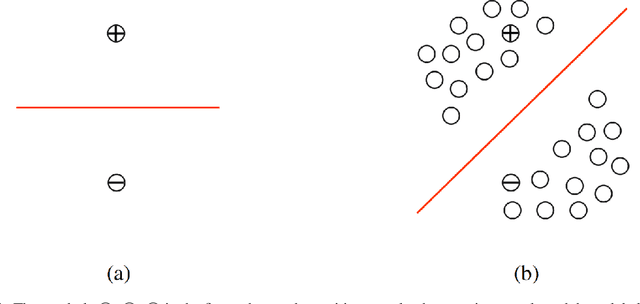
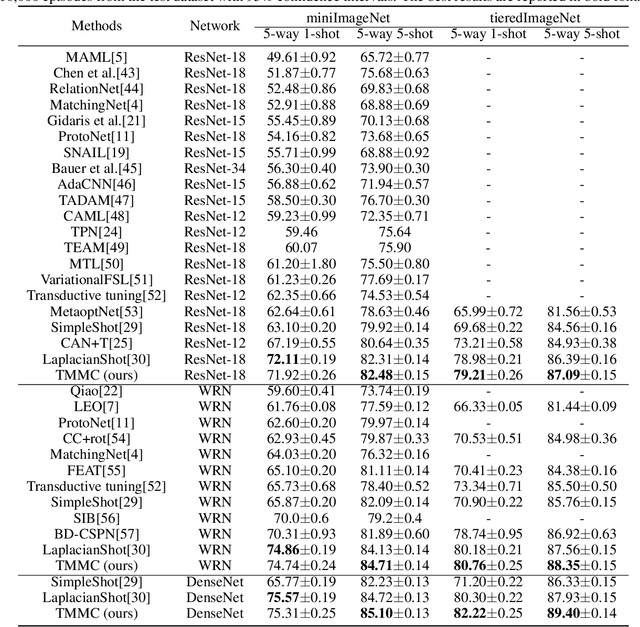


Abstract:Few-shot learning aims to train a classifier that can generalize well when just a small number of labeled samples per class are given. We introduce Transductive Maximum Margin Classifier (TMMC) for few-shot learning. The basic idea of the classical maximum margin classifier is to solve an optimal prediction function that the corresponding separating hyperplane can correctly divide the training data and the resulting classifier has the largest geometric margin. In few-shot learning scenarios, the training samples are scarce, not enough to find a separating hyperplane with good generalization ability on unseen data. TMMC is constructed using a mixture of the labeled support set and the unlabeled query set in a given task. The unlabeled samples in the query set can adjust the separating hyperplane so that the prediction function is optimal on both the labeled and unlabeled samples. Furthermore, we leverage an efficient and effective quasi-Newton algorithm, the L-BFGS method to optimize TMMC. Experimental results on three standard few-shot learning benchmarks including miniImagenet, tieredImagenet and CUB suggest that our TMMC achieves state-of-the-art accuracies.
Temporal Alignment Prediction for Few-Shot Video Classification
Jul 26, 2021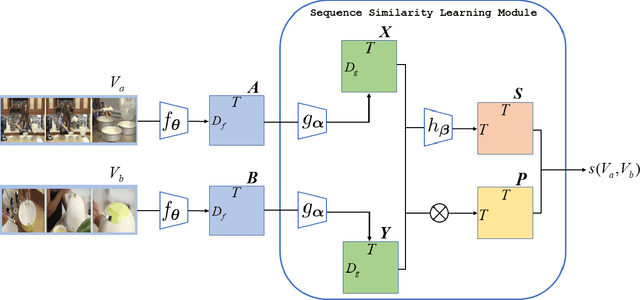
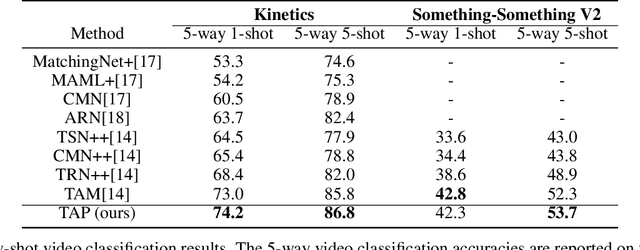
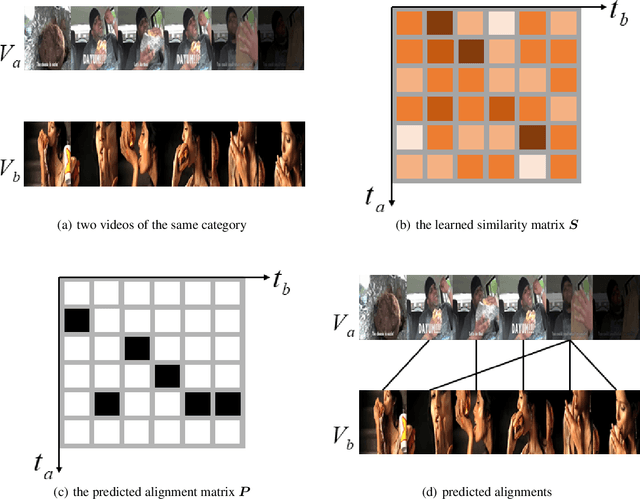

Abstract:The goal of few-shot video classification is to learn a classification model with good generalization ability when trained with only a few labeled videos. However, it is difficult to learn discriminative feature representations for videos in such a setting. In this paper, we propose Temporal Alignment Prediction (TAP) based on sequence similarity learning for few-shot video classification. In order to obtain the similarity of a pair of videos, we predict the alignment scores between all pairs of temporal positions in the two videos with the temporal alignment prediction function. Besides, the inputs to this function are also equipped with the context information in the temporal domain. We evaluate TAP on two video classification benchmarks including Kinetics and Something-Something V2. The experimental results verify the effectiveness of TAP and show its superiority over state-of-the-art methods.
 Add to Chrome
Add to Chrome Add to Firefox
Add to Firefox Add to Edge
Add to Edge